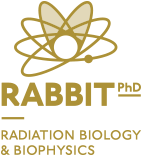PhD Viva | Alexandra Loupas
We are pleased to inform you that the following PhD Viva will take place:
17.01.2020 | 14:00 | Sala de Atos, Edificio 4
PhD Programme: Radiation Biology and Biophysics
Field of Expertise: Applied Atomic and Molecular Physics
PhD Thesis: "Study of Low-energy Electron Collisions with Molecules of Biological Relevance"
Adviser: Jimena Diaz Gorfinkiel, Senior Lecturer, The Open University
Co-adviser: Paulo Manuel Assis Loureiro Limão-Vieira, Professor, Faculdade de Ciências e Tecnologia, da Universidade Nova de Lisboa
Abstract:
Over the last decade, a lot of experimental and computational work has focussed on investigating dissociative electron attachment (DEA) in biological molecules (in particular DNA constituents). This knowledge is crucial to fully understand radiation induced damage: low kinetic energy electrons, produced in great quantities by the primary ionizing beam, are responsible for DEA as well as other processes that lead to molecular break-up. The first step in the DEA process is the formation of transient negative ions or resonances.
Much of the work carried out has been for gas phase/isolated molecules, neglecting the fact that water is present in the cell and is likely to affect the process. In addition, theoretical studies have concentrated on investigating simpler resonances (i.e. those that form without changing the internal state of the molecular target, shape resonances). Experiments indicate, however, that more complex resonances (core-excited that are formed when the target molecule is electronically excited) play a crucial role in DEA to DNA constituents.
In this project we will investigate electron initiated break-up of molecules of biological importance and how the environment (solvation) affects resonance formation. We will start by applying sophisticated ab initio techniques to the electron scattering process, using a suite of codes, the UKRmol+ suite, that has recently been redeveloped. The methodology and software have successfully been applied to studying isolated molecules, but the application to molecular cluster is novel and will posse a number of computational challenges.
fim
fim



